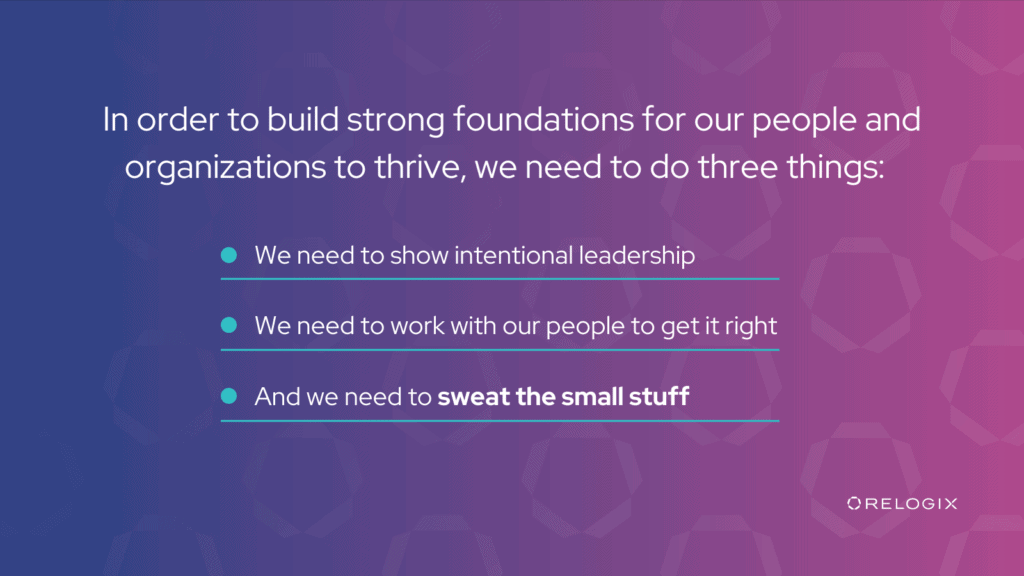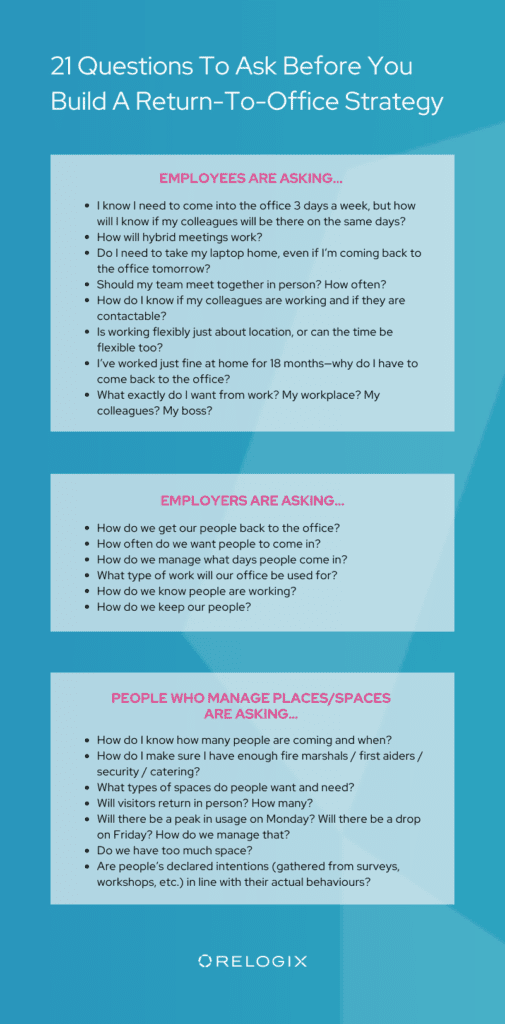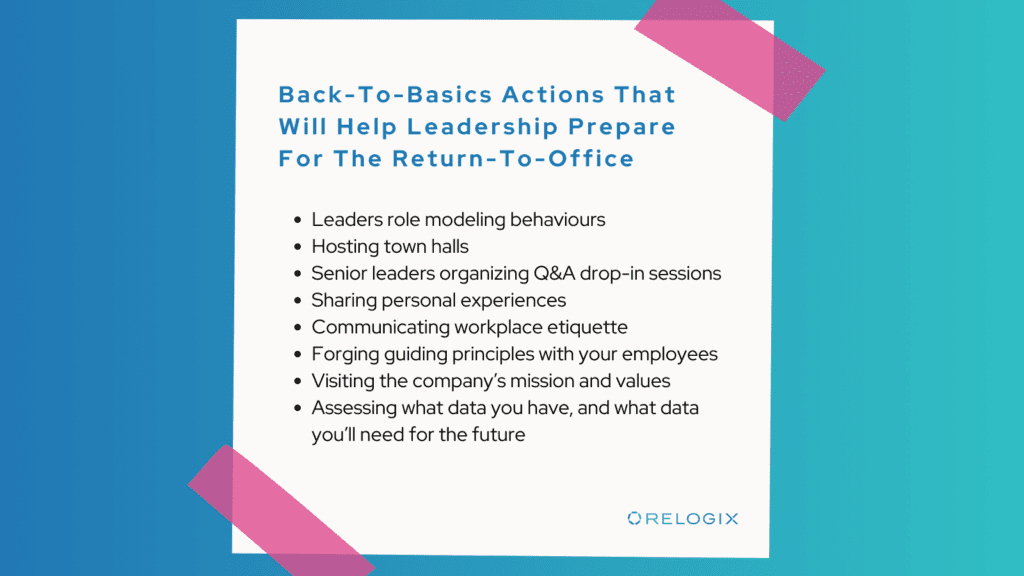21 Questions Before Building A Return-To-Office Strategy
Here at Relogix, we talk about the importance of understanding the data on what people intend to do versus what they actually do. But normally it’s in the context of occupancy analytics and how people use spaces. Now, it’s time to talk about the intentional versus the actual behaviour of leaders.
Employers and employees are trying to set out a new way forward, but there’s a huge disconnect between everyone’s wants, needs, and expectations. We have to find ways to bridge those gaps. We’ve had 18 months of workplace hokey pokey, and it may seem like the finish line is in sight. But the journey’s just beginning—and the control and certainty that employers gave up all those months ago is not about to come back.
Everything we know has changed forever. Where people work is sometimes out of our control, but when and how we work is up for grabs.
In order to build strong foundations for our people and organizations to thrive, we need to do three things:
- We need to show intentional leadership.
- We need to work with our people to get it right.
- And we need to sweat the small stuff.

Everyone’s got questions at this point. You may think they’re trivial, but phrases like “there are no silly questions” and “if you’re thinking it, others are too” are popular for a reason. Getting clear on these kinds of small details are what’s going to make or break an organization’s return to the office.
- I know I need to come into the office 3 days a week, but how will I know if my colleagues will be there on the same days?
- How will hybrid meetings work?
- Do I need to take my laptop home, even if I’m coming back to the office tomorrow?
- Should my team meet together in person? How often?
- How do I know if my colleagues are working and if they are contactable?
- Is working flexibly just about location, or can the time be flexible too?
- I’ve worked just fine at home for 18 months—why do I have to come back to the office?
- What exactly do I want from work? My workplace? My colleagues? My boss?
- How do we get our people back to the office?
- How often do we want people to come in?
- How do we manage what days people come in?
- What type of work will our office be used for?
- How do we know people are working?
- How do we keep our people?
- How do I know how many people are coming and when?
- How do I make sure I have enough fire marshals / first aiders / security / catering?
- What types of spaces do people want and need?
- Will visitors return in person? How many?
- Will there be a peak in usage on Monday? Will there be a drop on Friday? How do we manage that?
- Do we have too much space?
- Are people’s declared intentions (gathered from surveys, workshops, etc.) in line with their actual behaviours?

Many organisations have made public their plans for how work is going to look for them in the future. Among the strategies we’ve seen so far, “hybrid working” is taking centre stage. That being said, the discussion is mostly about the use of space, rather than about culture, ways of working, and the employee experience—and that’s a dangerous position.
Our human nature desires clear, solid answers, but we don’t have these—and we won’t for some time. Over the next few months, we have to keep testing, learning, and adapting. We need to find the balance between a customer-focused approach, an employee-led approach, and employer comfort in relation to how people are working and if they’re being effective in their roles. And we need to continue with this approach into the future, in order to keep evolving.
- Deep listening
- Focusing on transparency
- Embracing not knowing the answer
- Nurturing relationships and connection
- Exercising trust and curiosity
- Making decisions based on smart data
- Leaders role modelling behaviours
- Hosting town halls
- Senior leaders organizing Q&A drop-in sessions
- Sharing personal experiences
- Communicating workplace etiquette
- Forging guiding principles with your employees
- Visiting the company’s mission and values
- Assessing what data you have, and what data you’ll need for the future

There’s no right answer or right approach—there are only the right questions to ask. Organizations will need to sort through the simple-but-wrong answers to find the complex-but-right answers.
One thing is for sure: the behaviours that got us to this point are not the ones that will get us to the future. But what the future looks like is up to us all.

